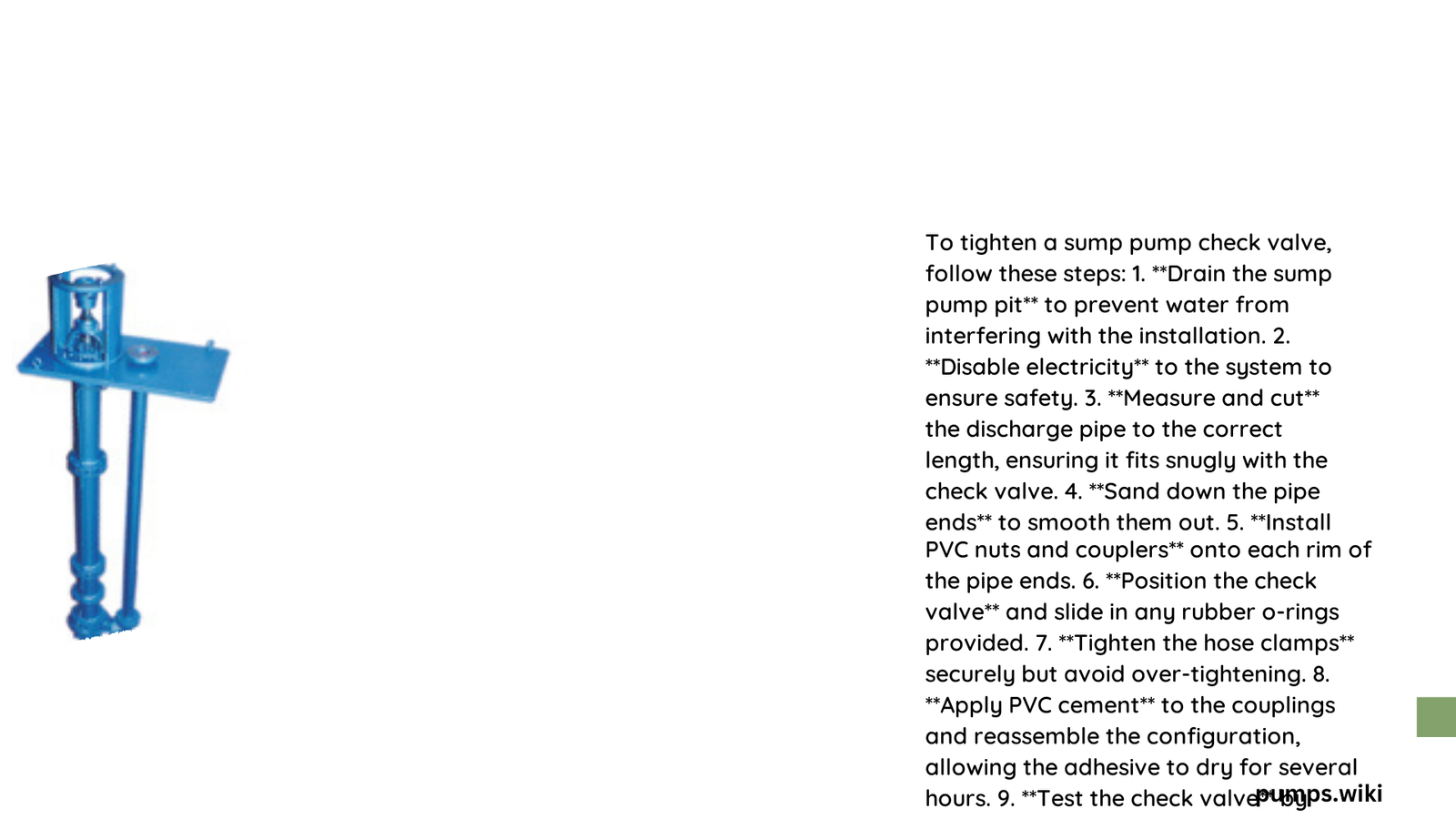Proper check valve tightening for sump pump is critical to preventing water backflow and ensuring optimal pump performance. Homeowners and DIY enthusiasts must understand the nuanced techniques of securing these valves correctly, which involves precise tightening methods, understanding torque specifications, and recognizing potential installation challenges that could compromise system efficiency.
Why Does Check Valve Tightening Matter?
Check valve tightening for sump pump is more than a simple mechanical task—it’s a crucial maintenance procedure that prevents potential water damage and ensures your drainage system operates smoothly. Improper installation can lead to significant issues like water leakage, pump inefficiency, and potential system failure.
What Tools Do You Need for Check Valve Tightening?

Essential Tools
- Adjustable wrench
- Torque wrench
- Teflon tape
- Pipe wrench
- Protective gloves
Recommended Safety Equipment
- Safety glasses
- Work gloves
- Knee pads
How Tight Should a Sump Pump Check Valve Be?
Torque Specifications by Valve Type
| Valve Type | Recommended Torque | Tightening Technique |
|---|---|---|
| Swing Check Valve | 15-25 ft-lbs | Gradual, even pressure |
| Spring-Loaded Valve | 10-20 ft-lbs | Incremental turns |
| Compression Valve | 12-18 ft-lbs | Careful compression |
What Are Common Mistakes During Check Valve Installation?
Potential Pitfalls to Avoid
- Over-tightening connections
- Using incorrect thread sealant
- Misaligning valve orientation
- Neglecting manufacturer’s specific instructions
- Failing to inspect gasket condition
How to Perform Check Valve Tightening Step-by-Step?
Detailed Installation Process
- Preparation
- Shut off power to sump pump
- Drain existing water from system
-
Clean installation area thoroughly
-
Connection Preparation
- Apply Teflon tape to threaded connections
- Ensure pipe ends are clean and free from debris
-
Check gasket/O-ring condition
-
Valve Positioning
- Verify correct flow direction
- Align valve precisely
- Support pipes during installation
What Maintenance Practices Extend Check Valve Life?
Recommended Maintenance Schedule
- Quarterly Inspection
- Check for visible leaks
- Verify valve movement
-
Inspect connection tightness
-
Annual Maintenance
- Replace worn gaskets
- Lubricate moving parts
- Test valve functionality
When Should You Replace Your Check Valve?
Signs of Valve Failure
- Persistent water leakage
- Unusual pump cycling
- Visible corrosion
- Reduced pump efficiency
- Strange noises during operation
Pro Tips for Successful Check Valve Tightening
- Always follow manufacturer’s specific guidelines
- Use calibrated torque tools
- Never force connections
- Perform pressure tests after installation
- Document your maintenance procedures
Cost Considerations
Potential Expenses
- Basic check valve: $20-$50
- Professional installation: $100-$250
- Emergency repair: $300-$600
Troubleshooting Common Issues
Quick Diagnostic Checklist
- Verify power supply
- Check valve alignment
- Inspect connection tightness
- Test system functionality
- Consult professional if problems persist
Final Recommendations
Check valve tightening for sump pump requires precision, patience, and proper technique. By understanding torque specifications, using correct tools, and following systematic installation procedures, homeowners can ensure reliable sump pump performance and prevent potential water damage.
References:
– Sump Pump Manufacturer Guidelines
– Plumbing Installation Best Practices
– Home Maintenance Resources
